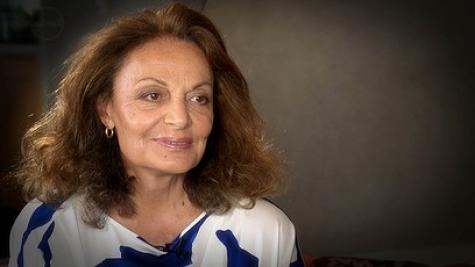Diane von Furstenberg says when she was a little girl she didn't know what she wanted to do when she grew up - but she knew what type of woman she wanted to be.
"I became that woman through fashion - and therefore through fashion I was able to give women tools to become also the women they want to be.
"That's my mission. My mission in fashion and my mission in life - is to be able to give women confidence," she tells AAP.
For von Furstenberg, who was recently named by Forbes as the most powerful woman in fashion, she can rest assured that her childhood dream came true.
And just as little girls dream of marrying a prince - it's just one of the many chapters of the von Furstenberg story.
Her mother was a Holocaust survivor and weighed just 22kg when she was freed from the camps. A year later, in 1946, Diane Halfin was born.
The von Furstenberg name came after she married a European prince in 1969. She has a son and daughter to Prince Eduard Egon von und zu Furstenberg.
Her first marriage may have surely opened doors but Von Furstenberg continued her mission, especially after creating her wrap dress in 1973.
Her invention has gone on to symbolise power and independence for an entire generation of women around the world.
"My life has been a lot of things," she says.
"I was miracle child and I'm now a miracle old lady."
We meet backstage in Sydney before her she shows off her 2013 spring collection, called Palazzo, to her Australian fans.
Mention the name Diane von Furstenberg and any fashionista will say two words: "wrap dress". It's so famous that her creation hangs in both the Smithsonian and Costume Institute collection at the Metropolitan Museum of Art in the US.
Dressed in a white and black silk shift dress, embroidered in pink sequins, teamed with her signature chunky chain-link bracelet, with a pair of high black heels, the Belgian/American fashion designer oozes European style and grace, yet is wonderfully down to earth and real.
As she says "some fairy tales end with the girl marrying the prince... some start there".
She describes her latest collection as her belief for women, but it's also personal, too.
"It (Palazzo) really is so much about me when I was a young princess... A rebel princess."
Using silks in lime green, tangerines and terracotta, models wore flowing dresses, long kaftans, low-cut tops and narrowly-cut trousers. Her collection, she says is a journey from Rome, Marrakesh and Jaipur.
"I try to make my clothes desirable and accessible," she says.
After a brief hiatus, von Furstenberg stepped back into the industry and is showing no signs of slowing down. After Sydney she is jetsetting to Hayman Island to christen the penthouse suite that she helped design.
"I started back 13 years ago hoping to make a comeback because I noticed young girls were buying my old dresses.
"Now I realise I've actually built an asset and it's a big business and it has a history and it has a vocabulary.
"What I have to offer women in fashion - is to enlighten and flatter the woman."
She says age is no barrier and she will continue to promote freedom.
"If I can inspire women I think I will have done something."
The industry certainly appreciates von Furstenberg's commitment. In 2005 she received the Lifetime Achievement Award from the Council of Fashion Designers of America (CFDA), and a year later was elected to her current position as its President.
But even with all these accolades, von Furstenberg, the former princess, a mother, a grandmother says her children are her greatest creation.

















__small.png)










